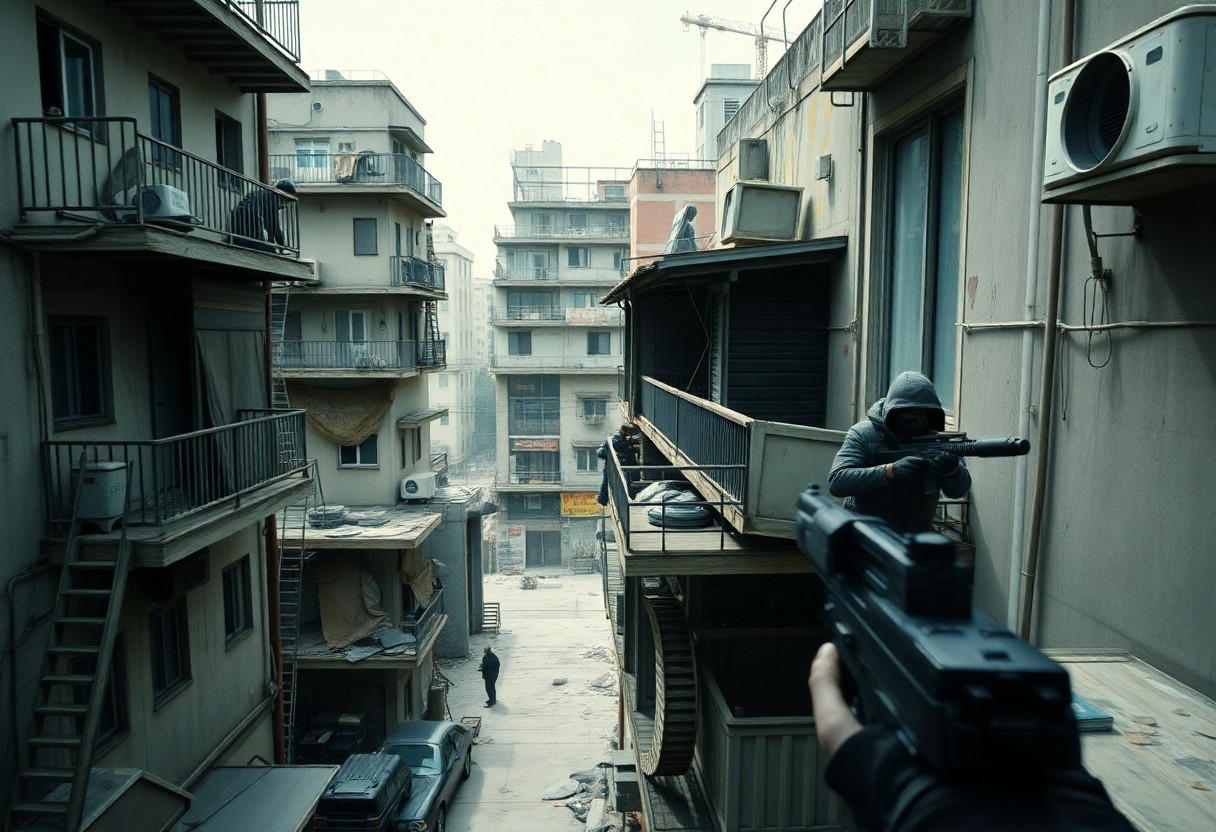You may have noticed how verticality plays a pivotal role in competitive first-person shooters, transforming the way players approach gameplay. Among the myriad of titles that have embraced this concept, Rainbow Six Siege stands out as a benchmark for integrating verticality into its core mechanics, which offers unique strategies and enhanced player experiences. Since its release, Siege has adeptly redefined the stakes of tactical gameplay, cleverly utilizing its environments to create a multi-layered battlefield that emphasizes not just lateral movement, but vertical exploration as well.
One of the defining features of Rainbow Six Siege is its destructible environments, which empower players to manipulate their surroundings dynamically. Unlike many FPS titles where the emphasis is primarily on lateral movement, Siege encourages players to think about the vertical plane. Operators can breach walls, floors, and ceilings, opening up various lines of sight and routes through a map. This element introduces a level of strategy that requires players to be aware of threats not just in front of them but also above and below them. Teams need to coordinate their movements and establish positions accordingly, fostering an environment of constant tension where ambushes can come from numerous vantage points.
The game’s levels are meticulously designed to leverage verticality. Destruction mechanics allow players to create new paths or eliminate cover, leading to potential ambush sites or escape routes. A well-timed breach can shift the tide of a match by granting access to critical locations, illustrating how vertical movement is not just about mobility. Players must constantly analyze how to exploit the map’s vertical layers to gain an advantage over their opponents. The strategic diversity this allows increases the game’s complexity, elevating it above traditional FPS experiences.
Operators in Rainbow Six Siege each possess unique gadgets and abilities, many of which can further enhance vertical gameplay. For instance, operators can use drones to scout out higher ground or utilize gadgets to reinforce barricaded structures. The presence of operators like Ash, who can breach walls from a distance, underscores the tactical depth that verticality offers. It’s not merely a matter of shooting, but rather managing resources and abilities to play around the vertical spaces effectively. This level of strategy is unparalleled in other FPS games where verticality is often an afterthought rather than a central element.
Moreover, the game’s emphasis on teamwork and communication complements its vertical dynamics. Players must relay information regarding enemy positions and movements, which can often be impossible without clear lines of sight across different vertical layers. This necessity for collaboration cultivates a richer experience, as each player’s choices and positioning directly influence the team’s success.
Ultimately, Rainbow Six Siege harnesses verticality in ways that profoundly impact gameplay, creating a unique experience compared to other first-person shooters. By prioritizing strategic vertical movement, players are constantly challenged to rethink standard FPS mechanics. The blend of destructible environments, operator abilities, and tactical depth makes Rainbow Six Siege a champion of verticality, showcasing an evolution in competitive gaming that prioritizes not only movement but also strategic thinking and teamwork.






